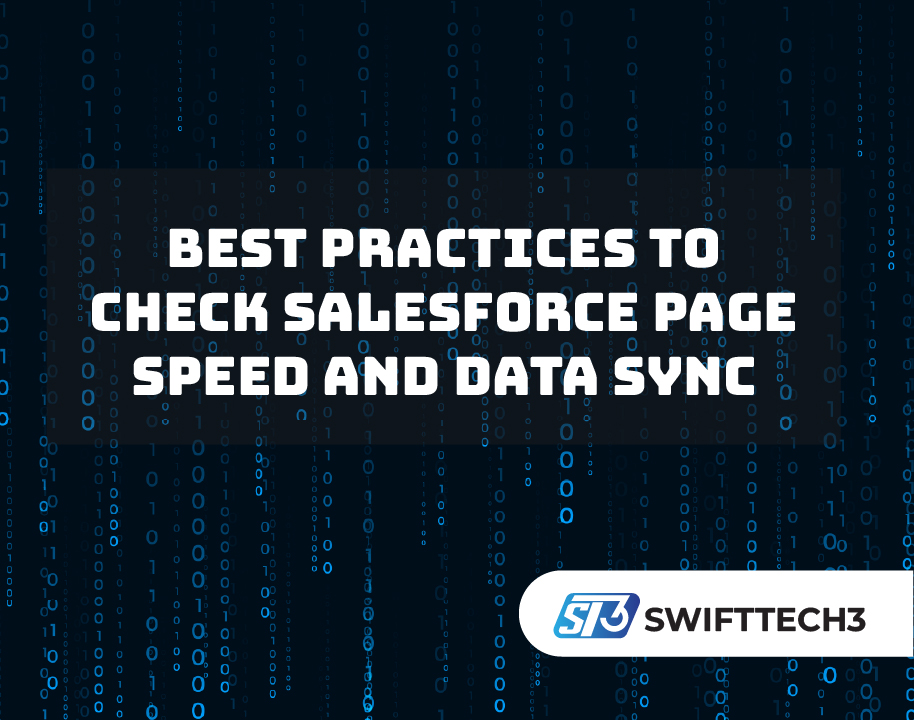Salesforce is a powerfull platfrom for managing customer relations, sales process and buisness operations. But as organizations grows and add more data and diffrent apps, keeping pages fast and data sync reliable becomes realy important. Slow loading Salesforce pages can frustrate users alot and cut productivity, while sync issues can ruin report accuracy and decision makeing. Knowing how too check Salesforce page perfomance and optimize data synchronization helps make sure your system runs smooth and effecient always.
Understanding Page Speed in Salesforce
Page speed means how quick Salesforce pages load and react when user clicks around. A slow page can be coz of many things like heavy Visualforce components, too many data queries, messy Apex code, or not well optimized Lightning parts. Perfomance can also change depending on network speed, browser you use, and how much data being loaded at once.
First step to fix perfomance is learning how too check Salesforce page behavior under diffrent conditions. This include testing how quick pages render, what things are loaded, and where bottlenecks come from.
Tools to Analyse Salesforce Page Perfomance
Salesforce give few inbuild tools that help devs and admins see perfomance issue early:
Lightning App Builder Perfomance Analysis:
This tool analyse Lightning pages and gives them score based on how complex they are and how long they load. It also tells you tips, like remove some components or optimise data source.
Salesforce Optimizer:
The Optimizer report shows how your org uses features and settings. It finds slow pages, unused fields or too many customisations that makes system slower.
Browser Developer Tools:
Use Chrome DevTools or Firefox console too check front end perfomance, API timing, script delays and page render time.
Event Monitoring Analytics:
Salesforce Event Monitoring give logs about user activity, page loads and perfomance trends. You can track stuff like Lightning page load time, API calls, login history etc.
Common Causes of Slow Salesforce Pages
Theres many reason why Salesforce page may slow down:
- Too many components: loading too much widgets, reports or scripts delays render.
- Unoptimized SOQL querys: bad queries fetch unneeded data and make pages slow.
- Client side complexity: heavy javascript or CSS files make browser lag.
- Network issues: big data transfer or poor connection slow page speed.
- Inefficient Apex code: backend code doing heavy calcualtions or sync tasks block render time.
If you find this bottlenecks early, user experiance will be alot better and system lighter.
Best Practices to Improve Page Speed
Simplify Lightning Pages:
Try using less components and add tabs or accordions so only needed data loads when click.
Optimize SOQL Queries:
Bring only data you need, not whole database. Use filters, limits and indexes.
Use Caching:
Salesforce supports cache for static info. Keeping common data local make load time faster.
Async Processing:
Move big tasks like reports, imports or bulk updates to Queueable or Batch Apex, so UI stays fast.
Monitor Often:
Keep checking Salesforce page perfomance using App Builder or browser tools. This help you catch speed issue after new deploys or updates.
Ensuring Reliable Data Synchronisation
Data sync in Salesforce means all connected system show same data all time. Whether syncing Salesforce with ERP, marketing app or data warehouse, speed and accuracy matters alot.
Sync problems can cause duplicates, lost records or mis-matched reports. So same like page speed, you gotta keep data sync healthy and checked.
Key Practices for Data Sync Optimization
Define Clear Sync Rules:
Decide which system is the “main truth” for each data type. Don’t make circular update coz it cause confusion.
Schedule Syncs Smartly:
Do syncs in off peak hours too avoid perfomance issues and API limit hit.
Use Salesforce APIs Right:
Use REST for small updates, BULK API for big data, and Streaming API for real time updates.
Add Error Logs and Alerts:
Make alerts or dashboards so admins get notify when sync fail or go slow. Fix things before they mess up data.
Avoid Many Integrations:
Combine same kind of integrations. Too many connectors doing same thing can create data mess and system load.
Advanced Tools for Monitoring Data Sync
MuleSoft Anypoint Platform:
Helps see all data flows in one place and catch sync errors in real time.
Salesforce Data Loader:
Good for manual sync jobs or checking if big data imports worked or not.
3rd Party ETL Tools (Talend, Informatica, Skyvia):
They give logs, schedule and transform data easily between Salesforce and other system.
Maintaining Perfomance and Sync Strategy
To keep things fast, you gotta do both page perfomance checks and sync audits regular. Record main metrics like page load, API response and sync success rate. If something change badly, check why asap.
Teamwork between admins, devs and users is also big deal. Admins monitor tools, devs fix code issues and users give feedback on speed or usability.
Conclusion
Good Salesforce perfomance is super important for user happyness and productivity. Following best tips for page speed and sync can stop downtime and wrong data. Keep optimizing your Salesforce often so it stay strong, fast and ready for future growth and inovation.


